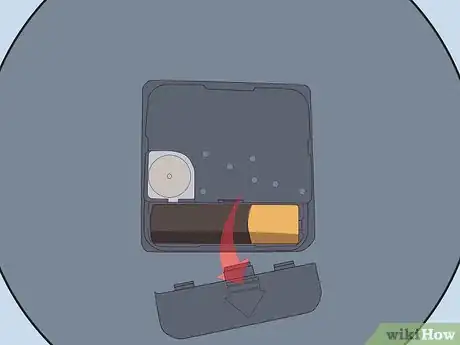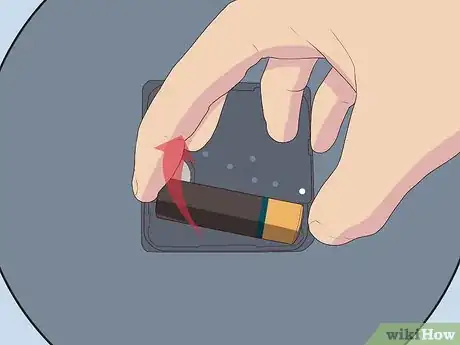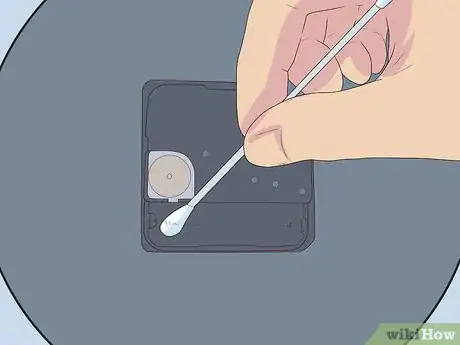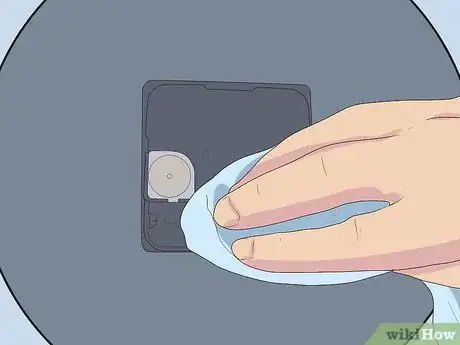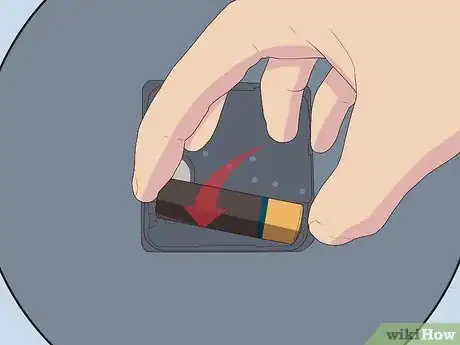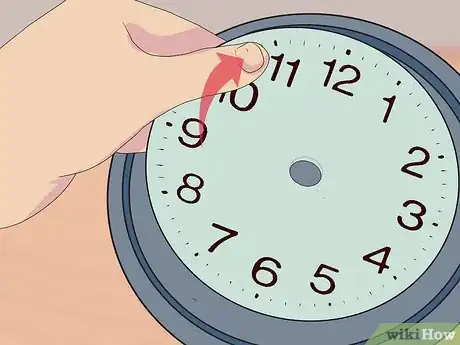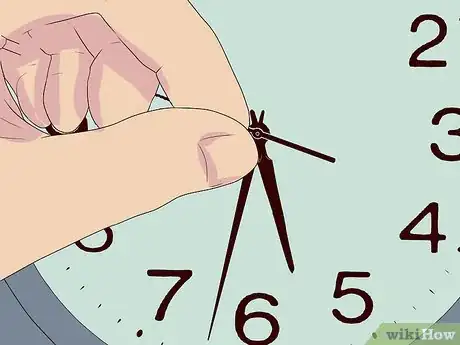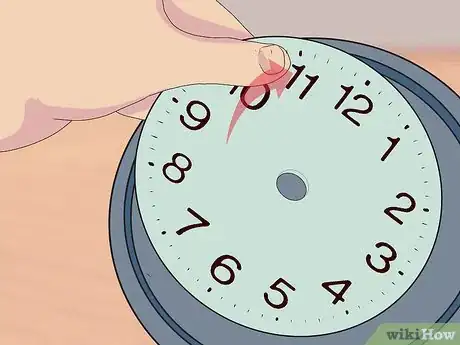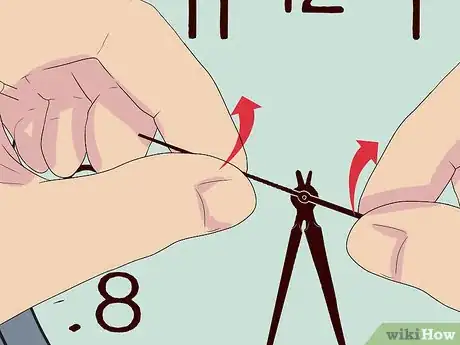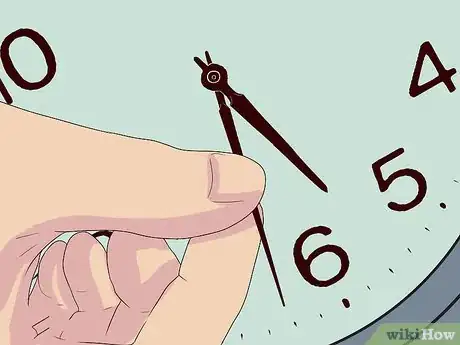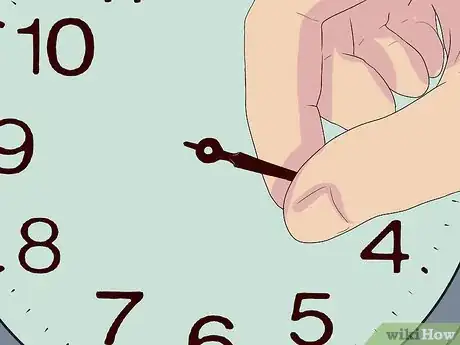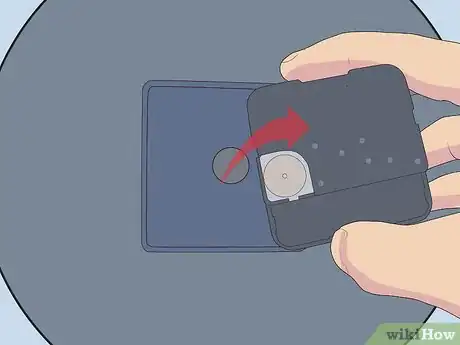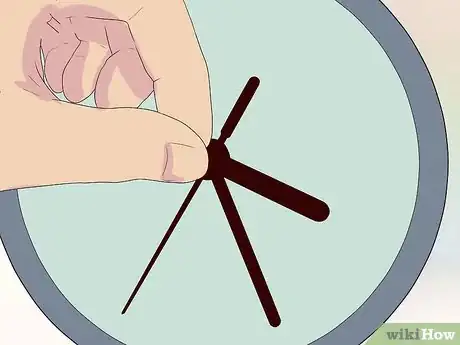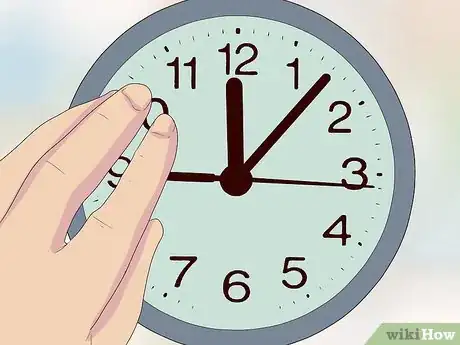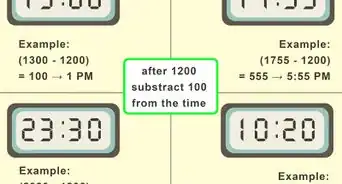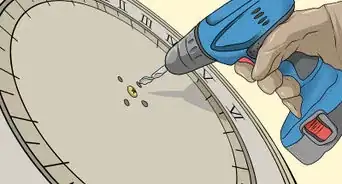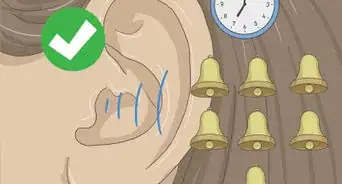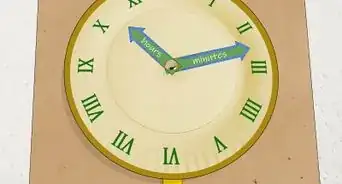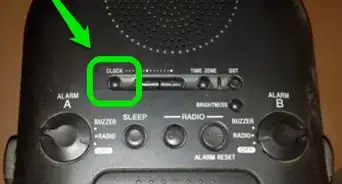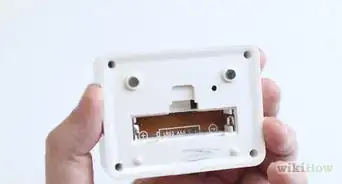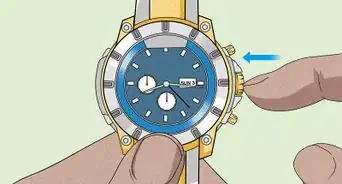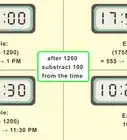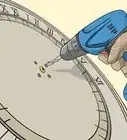This article was co-authored by wikiHow Staff. Our trained team of editors and researchers validate articles for accuracy and comprehensiveness. wikiHow's Content Management Team carefully monitors the work from our editorial staff to ensure that each article is backed by trusted research and meets our high quality standards.
This article has been viewed 318,159 times.
Learn more...
Technological advancements have created clocks that are efficient and easy to maintain. The most common clock on the market is a quartz clock. It uses a small quartz crystal and electrical currents to keep the time. These clocks are so easy to maintain that you usually only need to replace the battery when they stop working. If the clock gives you problems in spite of a new battery, you should check to make sure the hands aren’t hitting any other part of the clock. Beyond that, it is faster and cheaper to replace the clock movement (the assembly that keeps time) than to try to repair it.
Steps
Replacing the Battery
-
1Open the battery compartment. The battery compartment can be found on the back of the clock. The small black box, known as the movement, will house the battery. Use a screwdriver to press in the clip or unscrew it.[1]
-
2Remove the old battery. Use your fingers to pry up one end of the battery. This should release it from the compartment. Dispose of the battery.[2]Advertisement
-
3Clean the terminals. Remove any loose corrosion from the battery terminals. Use a damp q-tip or cotton ball to clean the terminals.[3]
-
4Dry the terminals. With a clean cloth or paper towel, gently dry off the terminals. It is important that the terminals are not wet when a new battery is inserted. If you do not have a clean, dry cloth, let the terminals air dry.[4]
-
5Insert the new battery. Read the instructions in the clock’s battery terminal to determine what type of battery the clock requires. Be sure to line up the positive and negative ends of the battery with the labels in the battery terminal.[5]
Reducing Friction
-
1Examine the clock hands with the faceplate intact. Watch the clock tick as the time goes by. Determine if the clock’s hands need any adjustment. The clock’s hands should not touch. You will know that the clock’s hands need adjusted if they catch on each other as they rotate around the clock.[6]
-
2Remove the faceplate. Gently remove the faceplate of the clock to make any adjustments to the hands. The faceplate should pop right off.[7]
- This step is not necessary if the clock does not have a faceplate.
-
3Ensure the clock hands do not touch each other. If the hands of the clock do touch, gently bend them away from each other. Be sure not to bend them too far. Just bend them enough so that they are not touching when passing each other.[8]
Replacing the Movement
-
1Take off the faceplate. If your clock has a faceplate, gently remove it. This can be done by simply popping it off of the rim of the clock.[9]
- This step is not necessary if your clock does not have a faceplate.
-
2Lift up the second hand. Remove the second hand by gently lifting it off. Be careful not to damage or bend the hand when you remove it from the clock’s face.[10]
-
3Take off the minute hand. Next, you will remove the minute hand. You will also want to be careful with this hand to not damage or bend it.[11]
-
4Remove the hour hand. The last hand that you should remove is the hour hand. Again, be careful to not damage the hand when you remove it from the clock’s face. [12]
-
5Pull out the movement. The movement is the square box that is sitting on the back of the clock. Gently pull it away from the clock. Be careful to not damage the face of the clock as you are removing the old movement.
-
6Insert the new movement. Insert the new movement where the old movement once sat. Be careful to not damage the face of the clock as you insert the movement into the hole in the face of the clock.
-
7Replace the hands. Begin replacing the hands by starting with the hour hand, and then the minute hand, and finally the second hand. Be careful to not bend the hands while you are replacing them on the face of the clock. If the hands touch, gently bend them away from each other.
-
8Put the faceplate back on. Once you have assembled all of the pieces of the clock, you should put the faceplate back on. The faceplate should pop right back into the edge of the clock.
Community Q&A
-
QuestionWhat if the minute hand is loose?
 Community AnswerIf your clock uses screws to keep the hands in place, try taking the back off and screwing them tight.
Community AnswerIf your clock uses screws to keep the hands in place, try taking the back off and screwing them tight. -
QuestionWhen l put a new battery into my clock, l found that the two clock hands are very loose and they won't go around. Is there anything I can do to fix this?
 Community AnswerIt sounds like the hands have come off the central spindle. This could be caused by the fact that the motor isn't fixed to the back of the clock properly, so when you grip it to fit the new battery it pulls the hands into the dial and loosens them. If you tighten the motor on the back of the clock, the hands should stay in place and it makes replacement of the battery much easier.
Community AnswerIt sounds like the hands have come off the central spindle. This could be caused by the fact that the motor isn't fixed to the back of the clock properly, so when you grip it to fit the new battery it pulls the hands into the dial and loosens them. If you tighten the motor on the back of the clock, the hands should stay in place and it makes replacement of the battery much easier. -
QuestionWhy will my clock run when lying flat, but quits when hung on a wall?
 Community AnswerA gear may be loose on the inside. Take it to a repair shop for help.
Community AnswerA gear may be loose on the inside. Take it to a repair shop for help.
Warnings
- Bending the hands of the clock will prevent them from ticking correctly.⧼thumbs_response⧽
References
- ↑ https://www.youtube.com/watch?v=yQJu74wrpxc
- ↑ https://www.youtube.com/watch?v=yQJu74wrpxc
- ↑ https://www.youtube.com/watch?v=yQJu74wrpxc
- ↑ https://www.youtube.com/watch?v=yQJu74wrpxc
- ↑ https://www.hunker.com/12001909/how-to-repair-a-quartz-wall-clock
- ↑ https://www.hunker.com/12001909/how-to-repair-a-quartz-wall-clock
- ↑ https://www.hunker.com/12001909/how-to-repair-a-quartz-wall-clock
- ↑ https://www.hunker.com/12001909/how-to-repair-a-quartz-wall-clock
- ↑ https://www.thriftyfun.com/How-to-Replace-a-Clock-Movement.html
About This Article
To maintain a battery-powered quartz wall clock, make sure to replace the battery and reduce friction when needed. If your clock stops working, open the battery compartment on the back of the clock to remove the old battery. Use a damp q-tip or cotton ball to gently wipe down the terminals, then dry them with a clean cloth or towel. Once everything is dry, insert the new battery to get your clock running again. On the other hand, if you notice that the clock’s hands are catching on each other as they rotate around, then you may need to adjust them. Gently bend the hands away from each other to they aren’t touching, which should reduce any friction. To learn how to replace the movement of your quartz wall clock, keep reading!
